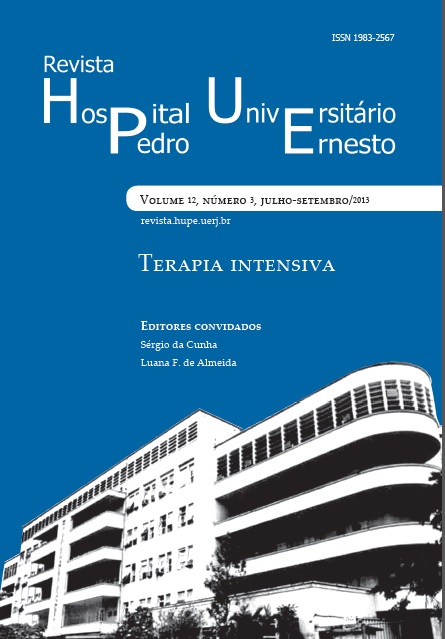Monitorização hemodinâmica no paciente crítico
DOI:
https://doi.org/10.12957/rhupe.2013.7531Περίληψη
A monitorização hemodinâmica tem papel fundamentalem pacientes críticos, especialmente seassociada à terapia que sabidamente melhora oprognóstico destes pacientes. A redução do usodo cateter de artéria pulmonar, devido ao seubaixo impacto na mortalidade, possibilitou oaparecimento de novas formas menos invasivasde aferição de dados, como o débito cardíacobaseado na análise da onda do pulso de pressãoarterial, doppler esofageano, ecocardiografiatranstorácica, bioimpedância e bioreactânciaelétrica. Os monitores baseados em onda depulso podem usar a calibração através de termodiluição,diluição por corante (lítio) ou utilizarum algoritmo pré-estabelecido de dados paracalibração. Apesar do uso crescente, a utilizaçãoem pacientes críticos instáveis é motivo de debate.A utilização do doppler esofageano tambémpossibilita uma monitorização minimamenteinvasiva, apesar de necessitar de ajustes frequentesde posicionamento além de sedação eanalgesia do paciente. O uso da ecocardiografiatranstorácica no manuseio de pacientes críticosvem ganhando terreno, apesar de exigir equipamentoadequado e treinamento específico, alémde não permitir a aferição contínua de dados.A bioimpedância ou bioreactância elétrica tempouco uso em pacientes críticos instáveis. Aprática de monitorização hemodinâmica associadaa variáveis dinâmicas permite predizerquais pacientes possivelmente se beneficiarãode terapia de expansão de volume intravascular,um dado extremamente relevante no manuseiodo paciente hipotenso na UTI. Finalmente, é importanteenfatizar que a escolha de determinadotipo de monitorização deve respeitar a gravidadedo paciente crítico, o grau de experiência da instituiçãocom determinado equipamento e deveestar associado a terapias de metas em em pacientescom instabilidade hemodinâmica.
Revista HUPE, Rio de Janeiro, 2013;12(3):57-65
doi:10.12957/rhupe.2013.7531


